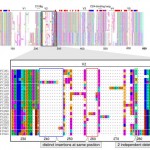 rVita emailed me today to enthuse about a purportedly “wonderful resource”, which is apparently the web’s first integrative medicine community (funny they should claim that as I had someone else emailing to tell me yesterday about their first such site too).
rVita emailed me today to enthuse about a purportedly “wonderful resource”, which is apparently the web’s first integrative medicine community (funny they should claim that as I had someone else emailing to tell me yesterday about their first such site too).
Anyway, I checked out the site, and am very, very disappointed, the first article I read was wrong, wrong, wrong. Homeopathy is most certainly not a viable alternative to vaccination against lethal diseases like polio, tetanus, and measles. To claim otherwise is not only seriously misleading but incredibly dangerous.
We’ve discussed some of the supposed issues surrounding possible problems with conventional vaccines here before, but homeopathy cannot prevent anyone from contracting such serious illness. No matter how hard followers of Hahnemann’s idea that diluting a substance repeatedly until absolutely none of the original compound remains in one’s vial and all the while repeatedly bashing the vial against a Bible believe it to work, it does not.
There is no valid, reproducible evidence of the efficacy of homeopathy as prophylaxis for serious disease where a vaccine would usually be used to prevent infection. The rVita article claims:
“Based on principles of natural law, you can receive protection against the flu or any disease including polio, tetanus, and measles by natural immunity.”
Seriously, there is no scientific basis nor evidence for any of the claims of homeopaths, particular with regard to prophylaxis against lethal diseases. This is as true in National Homeopathy Week as at any other time of the year.
rVita originally suggested the site would be “wonderful resource for any upcoming articles you might be planning on alternative or integrative medicine, Health 2.0, health resources on the Internet, or any other health-related topics,” well it does provide fodder for my highlighting some of the sillier claims of alt med.
Apparently, for users of the rVita community, “whether researching alternative remedies for allergies, infertility, insomnia, chronic pain or even adjunctive care for cancer, users can turn to rVita for help in separating the science from the snake oil.”
Hmmm…as well as the unfounded case of homeopathy, they also discuss Reiki therapy, therapeutic touch, art therapy and the like. Beyond, the placebo effect (which is admittedly very powerful) none of these or many other alternative therapies have any basis in reality
The exceptions, of course, are some herbal remedies. After all, a large proportion of modern drugs from aspirin and AZT to ephedrine and taxol are based on natural products. And some of the manipulating methods such as osteopathy and chiropractic, while dubious in their origins and some of their wider claims, do have physical effects. I was discussing such matters as the claims of chi, energy fields and auras with a colleague in the telecommunications industry who asked, scathingly, “In what units is this universal energy measured?” It’s a rather insightful put down.
Meanwhile, Niteen Bhat Founder CEO of rVeda Inc, of Santa Clara, California, and parent company of the rVita website, contacted me in response to my email respone to their approach. This is what he had to say:
I just wanted to highlight a few things about our philosophy to present our side of the story: Our goal is to bring perspectives from both for “for” and “against” constituents for a particular therapy or modality to enable informed decision making and separate science from snake oil. We welcome experts such as yourself to either comment on any article or even write your own articles that highlight issues with any remedy. That’s the power of Web 2.0 that we are unleashing on CAM.
Having said that, consumers and integrative medicine folks are finding some of these therapy to be effective even though scientific trials are inconclusive or not done yet. One of the reason being that many CAM therapies take personalized medicine approach and essentially have slightly different variants of therapies for each individual. This is exactly the reason we currently do not promote product sales, or do-it-yourself therapies, but expect consumers to get healed via licensed CAM practitioners.
Our content is overseen by conventional medicine MDs (I have copied our Chief Medical Advisor on this email). We did discuss the issues raised and came to [the] conclusion that we need to highlight practitioner articles as such so that we keep sanctity of our select/carefully chosen experts and their opinions. We have decided to separate practitioner articles under separate categories.
So, my review of their site has had a rather positive effect, but efforts to dry up supplies of snake oil must continue.
Many commentators will not accede to using words such as “complementary” or “integrated” to refer to alternative medicine, the name change falls into the same camp as switching from “creationism” to “intelligent design”, as far as I am concerned. Show me the evidence in the form of large-scale, robust, placebo-controlled, double or even triple, blind, clinical trials, however, not spurious poorly controlled tests and selective meta studies, and I’m a believer.
If it produces a sound akin to that of the aquatic avian species falling under the taxonomic name Anas platyrhynchos platyrhynchos, then it really is best avoided, especially if you wish to stay free of lethal diseases.
For an excellent summary of alternative medicine the fact and the fiction, check out Singh and Ernst’s book Trick or Treatment
 Genetic disease is a complicated affair. Scientists have spent years trying to find genetic markers for diseases as diverse as asthma, arthritis and cardiovascular disease. The trouble with such complex diseases is that they are none of them simply a manifestation of a genetic issue. They involve multiple genes, various other factors within the body and, of course, environmental factors outside the body.
Genetic disease is a complicated affair. Scientists have spent years trying to find genetic markers for diseases as diverse as asthma, arthritis and cardiovascular disease. The trouble with such complex diseases is that they are none of them simply a manifestation of a genetic issue. They involve multiple genes, various other factors within the body and, of course, environmental factors outside the body. I’m not entirely convinced that bird flu (avian influenza) is going to be the next big emergent disease that will wipe out thousands, if not millions, of people across the globe. SARS, after all, had nothing to do with avians, nor does HIV, and certainly not malaria, tuberculosis, MRSA, Escherichia coli O157, or any of dozens of virulent strains of disease that have and are killing millions of people.
I’m not entirely convinced that bird flu (avian influenza) is going to be the next big emergent disease that will wipe out thousands, if not millions, of people across the globe. SARS, after all, had nothing to do with avians, nor does HIV, and certainly not malaria, tuberculosis, MRSA, Escherichia coli O157, or any of dozens of virulent strains of disease that have and are killing millions of people. I am once again drawn to research from a team at the University of Westminster, a renowned institution that doles out so-called science degrees in homeopathy. This time the paper in question, published in the inaugural issue of the International Journal of Food Safety, Nutrition and Public Health (2008, vol 1, issue 1, pp 16-32) is on that perennial favourite: what to do about the
I am once again drawn to research from a team at the University of Westminster, a renowned institution that doles out so-called science degrees in homeopathy. This time the paper in question, published in the inaugural issue of the International Journal of Food Safety, Nutrition and Public Health (2008, vol 1, issue 1, pp 16-32) is on that perennial favourite: what to do about the  Evolutionary science needs debugging. Apparently, there are a few issues that cannot be resolved with any precision when one asks questions like: What makes a human different from a chimp? Apparently, at the level of genetic sequences, systematic errors creep into any analysis, distorting our ancestry.
Evolutionary science needs debugging. Apparently, there are a few issues that cannot be resolved with any precision when one asks questions like: What makes a human different from a chimp? Apparently, at the level of genetic sequences, systematic errors creep into any analysis, distorting our ancestry.

 rVita emailed me today to enthuse about a purportedly “wonderful resource”, which is apparently the web’s first integrative medicine community (funny they should claim that as I had someone else emailing to tell me yesterday about their first such site too).
rVita emailed me today to enthuse about a purportedly “wonderful resource”, which is apparently the web’s first integrative medicine community (funny they should claim that as I had someone else emailing to tell me yesterday about their first such site too). First online in The Alchemist, this week, is an award for pioneering work in mass spectrometry and the study of molecules colliding with surfaces.
First online in The Alchemist, this week, is an award for pioneering work in mass spectrometry and the study of molecules colliding with surfaces. Apologies if, like me, you’re a Brit and prefer to refer to petrol and diesel, then apologies for today’s post title. But, I’ve noticed a flurry of complaints from Americans about the price of vehicle fuel, recently, and just had to comment. Complaints about the price of gas? I hear the good folks of England, Wales, Scotland, and Northern Ireland exclaim! Yes, indeed, apparently, filling your tank Stateside now costs a staggering $4 per gallon (about 8 pounds sterling!) Pah! You say, us Brits are paying the equivalent of over $10 per gallon these days.
Apologies if, like me, you’re a Brit and prefer to refer to petrol and diesel, then apologies for today’s post title. But, I’ve noticed a flurry of complaints from Americans about the price of vehicle fuel, recently, and just had to comment. Complaints about the price of gas? I hear the good folks of England, Wales, Scotland, and Northern Ireland exclaim! Yes, indeed, apparently, filling your tank Stateside now costs a staggering $4 per gallon (about 8 pounds sterling!) Pah! You say, us Brits are paying the equivalent of over $10 per gallon these days.